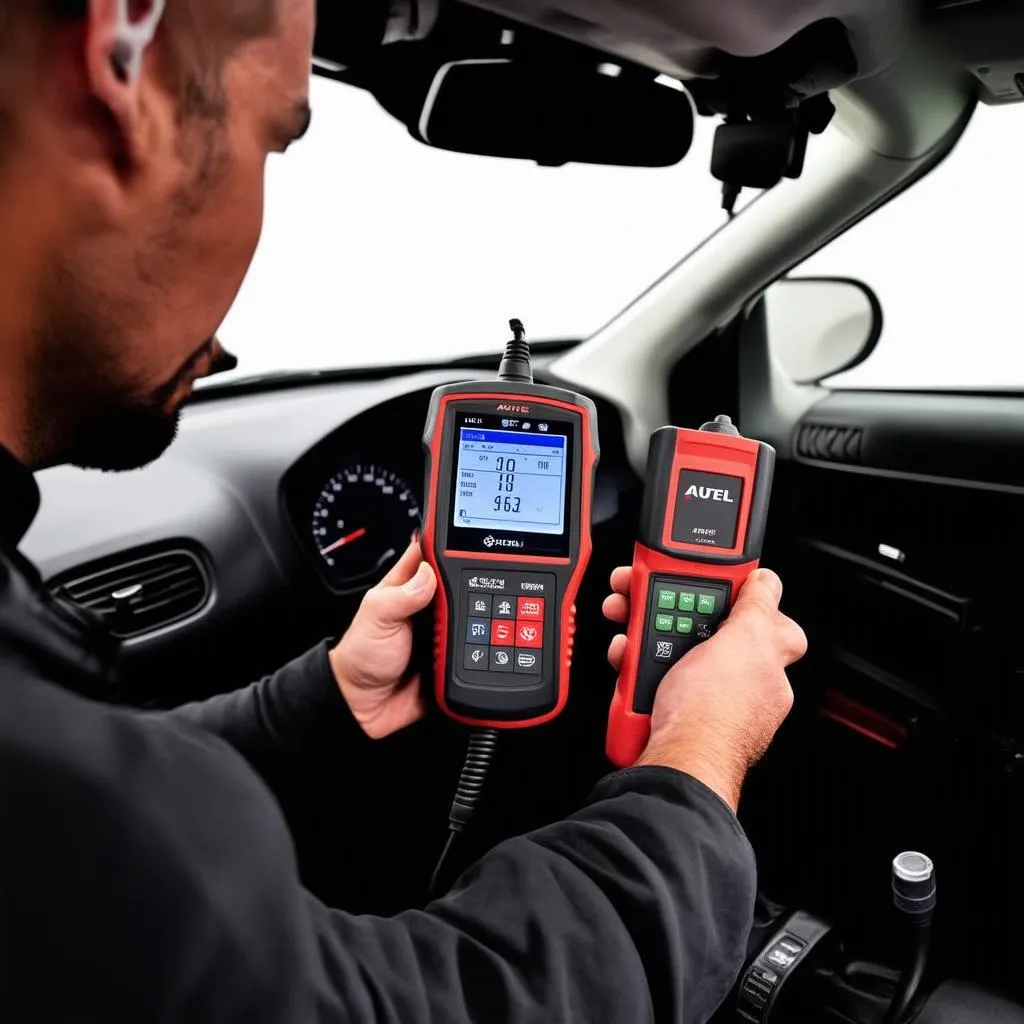They say, “A stitch in time saves nine.” This applies to your car too. Just like a doctor uses a stethoscope to listen to your heart, a mechanic uses a scan tool to listen to your car’s “heart” – the engine control unit (ECU). And when it comes to scan tools, Autel is a name that resonates with mechanics and DIY enthusiasts alike.
Understanding the Importance of Autel Scan Tools
Imagine your car is a complex orchestra, and the ECU is the conductor. Every system in your car – the engine, transmission, brakes, even your air conditioning – is connected to the ECU. This communication is critical for smooth operation, and when things go wrong, the ECU often holds the key to the problem.
An Autel scan tool acts like a translator between you and your car’s ECU. It allows you to access real-time data, read diagnostic trouble codes (DTCs), and even clear them. This information helps you understand what’s wrong with your car and what steps you need to take to fix it.
Using an Autel Scan Tool: A Step-by-Step Guide
Connecting the Scan Tool:
- Locate the OBD-II Port: This is typically located under the dashboard, usually near the steering column. It’s a 16-pin connector that’s standardized across most vehicles.
- Plug in the Autel Scan Tool: Ensure the tool is turned off and then securely plug it into the OBD-II port.
Powering Up and Navigating:
- Turn the Ignition Key: You can either turn the ignition to “ON” or start the engine to power up the Autel Scan Tool.
- Selecting the Vehicle: Once the tool powers up, you’ll need to select the year, make, and model of your vehicle. Most Autel scan tools have a comprehensive database for accurate vehicle identification.
Accessing Diagnostic Information:
- Selecting Diagnostic Modules: The Autel scan tool will display a list of available modules you can access. These may include the engine, transmission, ABS, Airbag, and more.
- Reading Diagnostic Trouble Codes (DTCs): Select the module you want to diagnose and the tool will display any stored DTCs.
- Viewing Live Data: You can also access real-time data from various sensors within the selected module. This is helpful in understanding how specific components are operating.
Performing Additional Functions:
- Clearing DTCs: Once you’ve addressed the issue, you can use the Autel scan tool to clear the DTCs. However, it’s crucial to ensure the issue is truly resolved before clearing the codes.
- Performing Bi-directional Controls: Some Autel scan tools have bi-directional capabilities. This allows you to remotely control certain components, like opening or closing valves or activating actuators.
Frequently Asked Questions:
Can I use an Autel scan tool on any car?
While Autel scan tools are compatible with most vehicles equipped with an OBD-II port, some advanced functionalities might not be available for all car models.
How do I know which Autel scan tool is right for me?
The best Autel scan tool for you depends on your needs and budget. If you’re a home mechanic, a basic scan tool like the Autel MaxiScan MS300 might suffice. For more advanced diagnostics, consider the Autel Maxisys Pro MS908P.
Can I update the software on my Autel scan tool?
Yes, most Autel scan tools can be updated with the latest software. This is important to ensure compatibility with newer vehicles and features.
Conclusion:
An Autel scan tool is an invaluable tool for anyone who wants to understand and maintain their car. It empowers you to diagnose problems, monitor performance, and perform basic maintenance tasks. Remember, proper usage and understanding of your scan tool is key to maximizing its potential.
If you’re looking to upgrade your diagnostics game, an Autel scan tool is definitely worth considering.
If you need assistance with using your Autel scan tool, or have any questions about automotive diagnostics, feel free to contact our team of experts. We’re here to help you keep your car running smoothly.
Contact us via Whatsapp: +84767531508 for any questions or support.



